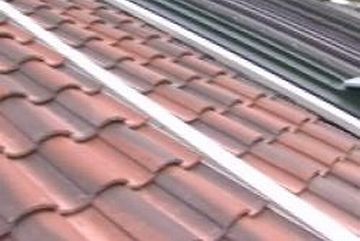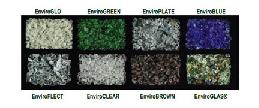Look from a distance gives you no distinction – it’s a roof alike. On a closer look though, you perceive, it’s something otherwise.

Citing the undue repercussions of the global warming, depletion of energy is our biggest concern. As eco-conscious inhabitants, we need to make concrete efforts to conserve electricity, coz it is one integral way out.
Yes, you perhaps are doing your bit to ease that global energy load. Getting the heat pumps work efficiently, installing solar panels to power your homes. That’s great indeed, then what else can you do? How about a way out on ‘top’ that helps you reduce your hefty summer electricity bills by 8 percent or more, further, keeping your home comfortable.
The ‘top’ – roof, when thinking of roofing options – slate, solar photovoltaic, metal and shingles are the major considerations. You may take that as my instinctive inference, but in practicality, you will comply. These options were mere artistic with energy efficiency to miniscule level. Here, Researchers at Oak Ridge National Laboratory have developed a concept of a novel roof and attic system that could keep your homes cool and simultaneously fall easy on your pocket.
Numerous roof-building technologies have been deployed from the energy efficiency perspective, but if thoroughly analyzed, there has been no real progress when it comes to roof sustainability. However, the team of researchers at ORNL led by Bill Miller with their prototype i.e. with the use of active thermal mass components, reflective pigments and coatings, subventing, radiant barriers and other new techniques are wishing to change the same.
Tech specification:
The concept as mentioned involves various elements, it is compatible with traditional wood and steel framing technologies, also available with a special reflective paint, innovative insulation and ventilation technology. Inorganic phase change material is added to dynamic thermal barriers and is compressed between two reflective surfaces, similar to aluminum foil. The material acts as an obstacle and reduces the heat from flowing into the attic from the roof; this helps the roof to store solar energy without releasing the same into the home’s living space during the course of the day, while releasing it into the atmosphere at night.
The prototype from the researchers is based on the similar aspect developed in the 1970’s and 80’s that assure to relive the technology behind phase change material, which in-spite of being energy efficient was only moderately successful then. The phase change material used here helps the concept to work very efficiently. The attic temperatures are reduced by about 22 degrees Fahrenheit, thereby decreasing the amount of heat that seeps through the attic floor down to the living space. Thus, burring the electricity, used to power those heat extinguishers, I mean the AC’s, wee bit less.
How is the employed phase change material different to its rejected predecessor?
The conventionally used material was susceptible to fire, was subject to corrosion i.e. suffered loss of phase change capability. The similar material used by the ORNL technology is more improvised; it like the previous absorbs the heat as it melts during the day and again solidifies when releases the same at night. The material used is also free from the fire concern.
ORNL roof system pitted against the few in place:
The Metal roofing system is one form of roofing system that is in place to help people go energy efficient. This can be installed directly over the existing roof, to eliminate any kind of waste. The metal roofs require very low maintenance, and are a few natural hazards proof. The roofing system is eco-friendly and durable, which along with being energy efficient saves a lot on the power bills. The metal roofs have been tested by ORNL for its durability in the past with findings rating the system as the most efficient roofing system until.
In the US, Energy Star program has developed a roofing system that reflects a large chunk of the sun’s rays, thereby lowering the roof temperatures considerably, projected at about 100F. Thus, minimizing the proportion of heat entering into the living space of the house, and the air conditioning needs in the abode.
Then are the solar photovoltaic roofs that help you generate free electricity from the abundant and inundated supply of the sun’s rays. The roofs assist you produce your own electricity, thereby helping you run appliances to keep you cool and your wallets intact.
The main function desired out of the roof is that it protects the structure under it, there are many who do protect, but the ORNL’s technology that is part of ORNL’s Building Envelopes Program is one that also saves energy. The roofing system cuts up to 8 percent on the electric bills of your abode. Varieties of materials embedded in the system have a solitary function of their own and the combination of them all is this technology, ‘the crafted roof’, which is about 200 sensors wired up to 16 roofs that knocks off 90 percent of the heat and gives the researchers the impetus that the system really works.
Near future
The roofing technology is already put to use, but like everything else, even this has margin for improvement. The researchers are being tipped by the industries, that’ll definitely mount as and when they can get the technology to go energy efficient and get it to go cost efficient too. Infrared reflective material, will be the next gen. roofing material. The radiant barriers and the phase change materials will be included into a dynamic attic system that will reduces the load on our pockets, and who knows, it could also set the carbon emissions reducing. That’ll be some achievement really do you confer?
[Source: Wbir]




